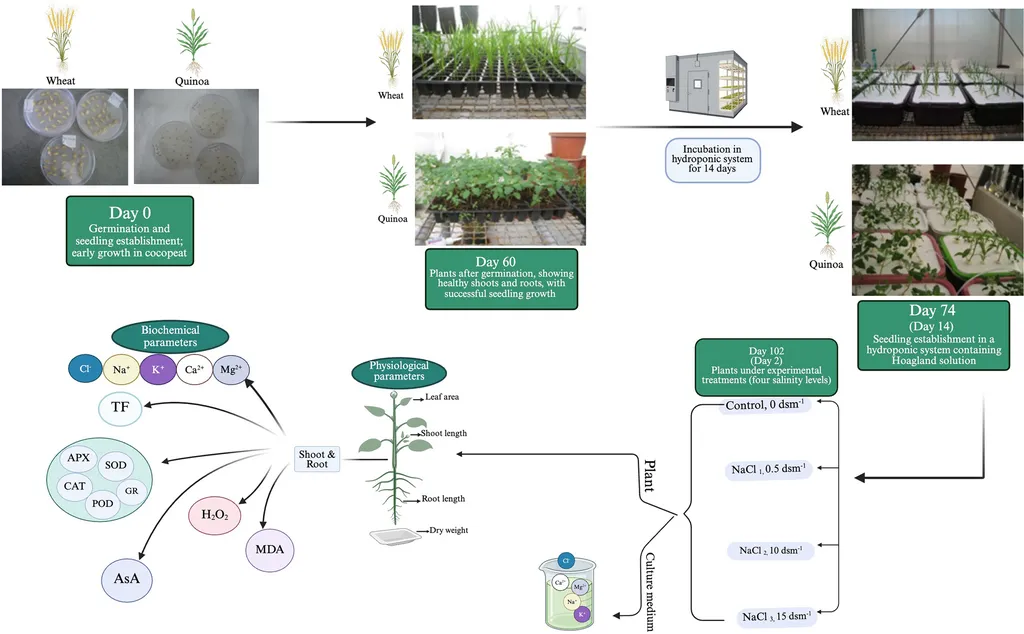In the relentless pursuit of sustainable agriculture, scientists are turning to nature’s own toolkit for solutions. A recent study published in *Frontiers in Plant Science* offers a promising avenue for combating one of the most pervasive challenges in agriculture: soil salinity. The research, led by Ghalia S. Aljeddani of the University of Jeddah, Saudi Arabia, explores the potential of Halocnemum strobilaceum extract (HE) as a foliar biostimulant to enhance the growth and resilience of quinoa (Chenopodium quinoa) in saline environments.
Salinity is a major abiotic stress that stifles crop productivity, particularly in arid and semi-arid regions where water scarcity and high evaporation rates concentrate salts in the soil. These conditions can drastically reduce crop yields, posing a significant threat to food security. The study assessed the effectiveness of HE in mitigating these effects under varying levels of NaCl-induced salinity stress, ranging from 0 to 150 mM.
The results were striking. Elevated salinity significantly reduced root length, leaf area, and seed weight in quinoa plants. However, the application of HE mitigated these adverse effects, enhancing leaf area and the weight of 1000 seeds under moderate to high salinity. “The improvements in leaf area and seed weight are particularly noteworthy,” said Aljeddani. “This suggests that HE could be a valuable tool for farmers in saline agricultural regions, potentially increasing both the quantity and quality of their yields.”
The study also delved into the physiological mechanisms underlying these improvements. HE was found to increase photosynthetic efficiency, reduce oxidative damage, and enhance the protein and lipid content of quinoa plants. Moreover, SDS-PAGE analysis revealed that HE treatment led to the de novo synthesis of stress-related proteins under high salinity, highlighting its role in modulating quinoa’s proteomic response.
The commercial implications of this research are substantial. With the global population projected to reach 9.7 billion by 2050, the demand for food is expected to increase dramatically. Meanwhile, climate change is exacerbating soil salinity in many regions, further threatening crop productivity. The development of eco-friendly, cost-effective solutions like HE could revolutionize agriculture in saline regions, enhancing food security and supporting the livelihoods of millions of farmers.
The study also opens up new avenues for research into the use of plant extracts as biostimulants. As Aljeddani noted, “Our findings suggest that Halocnemum strobilaceum extract has significant potential as a biostimulant. However, further research is needed to optimize its application and explore its potential in other crops.”
In the broader context, this research underscores the importance of sustainable agriculture practices in the face of climate change. As the world grapples with the challenges of feeding a growing population in a changing climate, innovative solutions like HE offer a glimmer of hope. They remind us that the answers to some of our most pressing challenges may lie not in the laboratory, but in the natural world around us.
As the agriculture sector continues to evolve, the integration of such eco-friendly and sustainable practices could very well shape the future of farming, making it more resilient and productive in the face of adversity.

